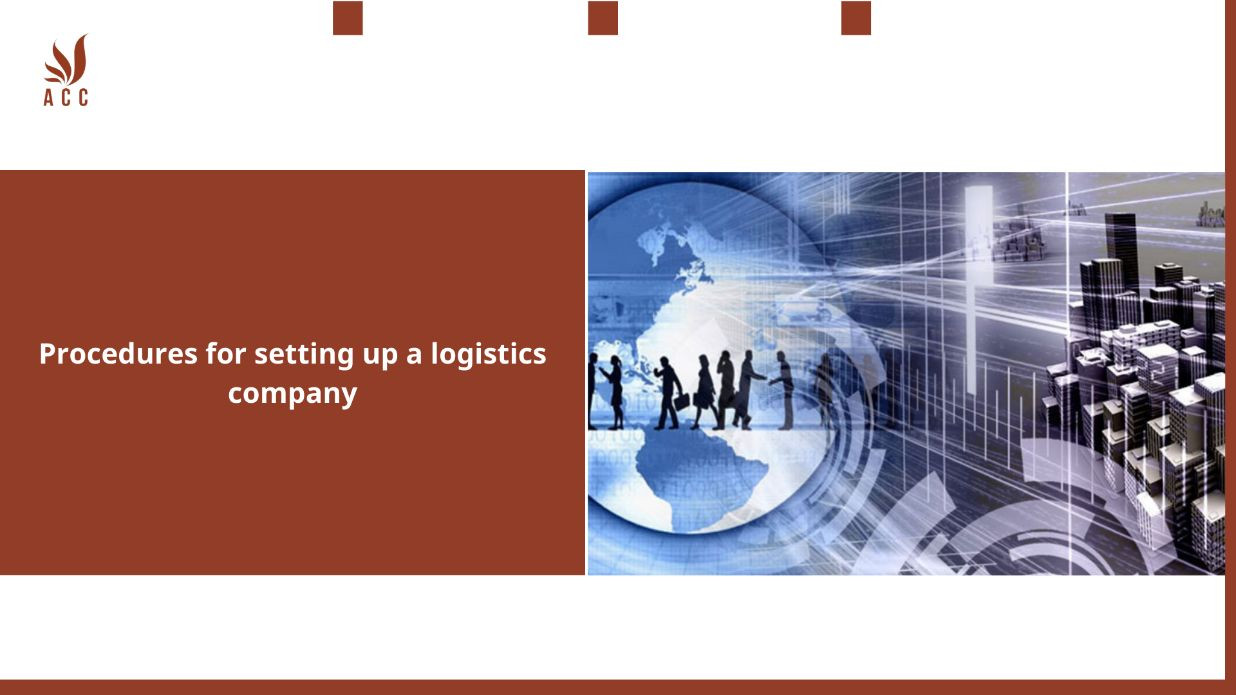Setting up a logistics company involves several important procedures. Here is a step-by-step guide to help you:
1. Business Planning:
- Conduct market research to identify the demand for logistics services in your target market.
- Determine your niche within the logistics industry, such as freight forwarding, warehousing, transportation, or supply chain management.
- Define your target audience and their specific logistics needs.
- Develop a comprehensive business plan that includes a company overview, market analysis, services offered, marketing strategies, financial projections, and operational details.

2. Legal Requirements and Registration:
- Choose a name for your logistics company and check its availability.
- Register your company with the appropriate government agencies, such as the business registration office or chamber of commerce.
- Determine the legal structure of your company (sole proprietorship, partnership, LLC, etc.).
- Obtain necessary licenses or permits required for operating a logistics company, such as transportation licenses or customs brokerage licenses.
3. Business Insurance:
- Research and obtain appropriate insurance coverage for your logistics company.
- Consider insurance policies for liability, cargo, transit, and other relevant areas to protect your business and clients.
4. Infrastructure and Assets:
- Determine the physical infrastructure and assets required for your logistics operations, such as office space, warehouse facilities, transportation vehicles, and handling equipment.
- Lease or purchase the necessary infrastructure and assets based on your business needs and budget.
5. Network and Partnerships:
- Establish partnerships with shipping lines, airlines, trucking companies, and other logistics service providers to offer comprehensive services to your clients.
- Develop a network of reliable suppliers, vendors, and agents to support your logistics operations.
- Negotiate favorable terms and conditions with your partners to ensure smooth and efficient service delivery.
6. Technology and Systems:
- Invest in logistics management software and systems to streamline your operations and enhance efficiency.
- Implement a robust warehouse management system, transportation management system, or freight forwarding software, depending on your specific services.
- Ensure your technology infrastructure supports real-time tracking, inventory management, and communication with clients and partners.
7. Human Resources:
- Determine the staffing needs of your logistics company, including roles such as operations managers, freight coordinators, warehouse staff, drivers, and administrative personnel.
- Recruit and hire qualified personnel with relevant experience in the logistics industry.
- Provide necessary training and ongoing professional development to your employees.
8. Q&A
Q1: What are the key legal and regulatory requirements for establishing a logistics company in [your country]?
A1: Setting up a logistics company involves complying with various legal and regulatory requirements. These may include business registration, obtaining necessary licenses or permits, adhering to transportation and safety regulations, and possibly meeting specific industry standards. It's essential to consult with local authorities, transportation agencies, and legal advisors to ensure full compliance with the legal framework in your jurisdiction.
Q2: What are the essential steps involved in establishing a logistics company, from initial planning to full operational capacity?
A2: Establishing a logistics company typically involves several key steps: a. Market Research: Conduct research to identify target markets, transportation needs, and competitors. b. Business Plan: Develop a comprehensive business plan outlining your logistics services, pricing structure, marketing strategy, and financial projections. c. Legal Structure: Choose a suitable legal structure (e.g., sole proprietorship, LLC, corporation) and register your business. d. Licensing and Permits: Obtain any required licenses, permits, and registrations for transportation and logistics operations. e. Fleet and Equipment: Secure vehicles, warehousing facilities, and necessary equipment for your logistics operations. f. Staffing: Hire skilled staff, including drivers, warehouse workers, and administrative personnel. g. Safety and Compliance: Establish safety protocols and ensure compliance with transportation regulations. h. Client Acquisition: Develop a marketing strategy to attract clients, which may include a website, networking, and partnerships. i. Financial Management: Set up financial systems for accounting, billing, and expense management. j. Insurance: Purchase appropriate insurance coverage to protect against potential liabilities.
Q3: What types of logistics services can a logistics company offer, and how do you determine which services to provide?
A3: Logistics companies can offer a variety of services, including: a. Freight Transportation: Moving goods by road, air, rail, or sea. b. Warehousing and Distribution: Storage and distribution of goods. c. Inventory Management: Monitoring and managing stock levels for clients. d. Supply Chain Optimization: Streamlining supply chain operations for efficiency. e. Customs Brokerage: Assisting clients with customs clearance and compliance. f. Value-Added Services: Offering services like packaging, labeling, and kitting.
To determine which services to offer, conduct market research to understand the specific logistics needs and preferences of potential clients. Consider factors such as industry demand, competition, and your company's expertise. Offering a mix of services that align with client needs can be a strategic approach.
Q4: What technology and tools are essential for managing a logistics company efficiently and providing high-quality services to clients?
A4: Managing a logistics company efficiently and providing quality services requires various technology and tools, including: a. Transportation Management Systems (TMS): TMS software for route planning, load optimization, and tracking. b. Warehouse Management Systems (WMS): WMS software for inventory tracking, order fulfillment, and warehouse operations. c. Fleet Management Software: Software for tracking vehicle locations, maintenance schedules, and driver performance. d. GPS and Telematics: GPS and telematics systems for real-time tracking of vehicles and cargo. e. Electronic Data Interchange (EDI): EDI systems for seamless communication with clients and partners. f. Customer Relationship Management (CRM): CRM tools to manage client relationships and communications. g. Financial and Accounting Software: Accounting software for managing billing, expenses, and financial reporting. h. Supply Chain Visibility Tools: Tools for providing clients with real-time visibility into their supply chain.
Nội dung bài viết:






Bình luận